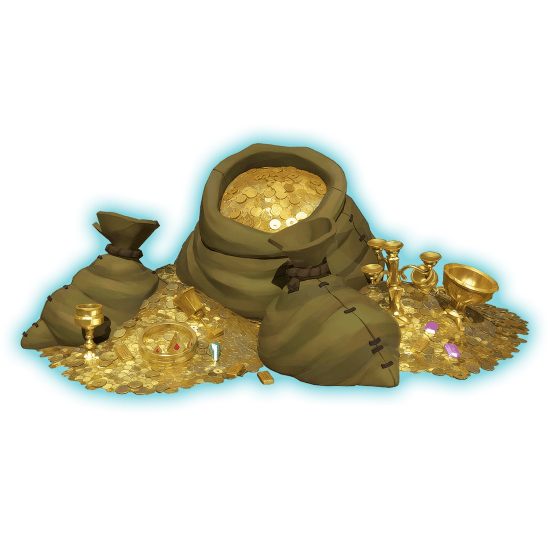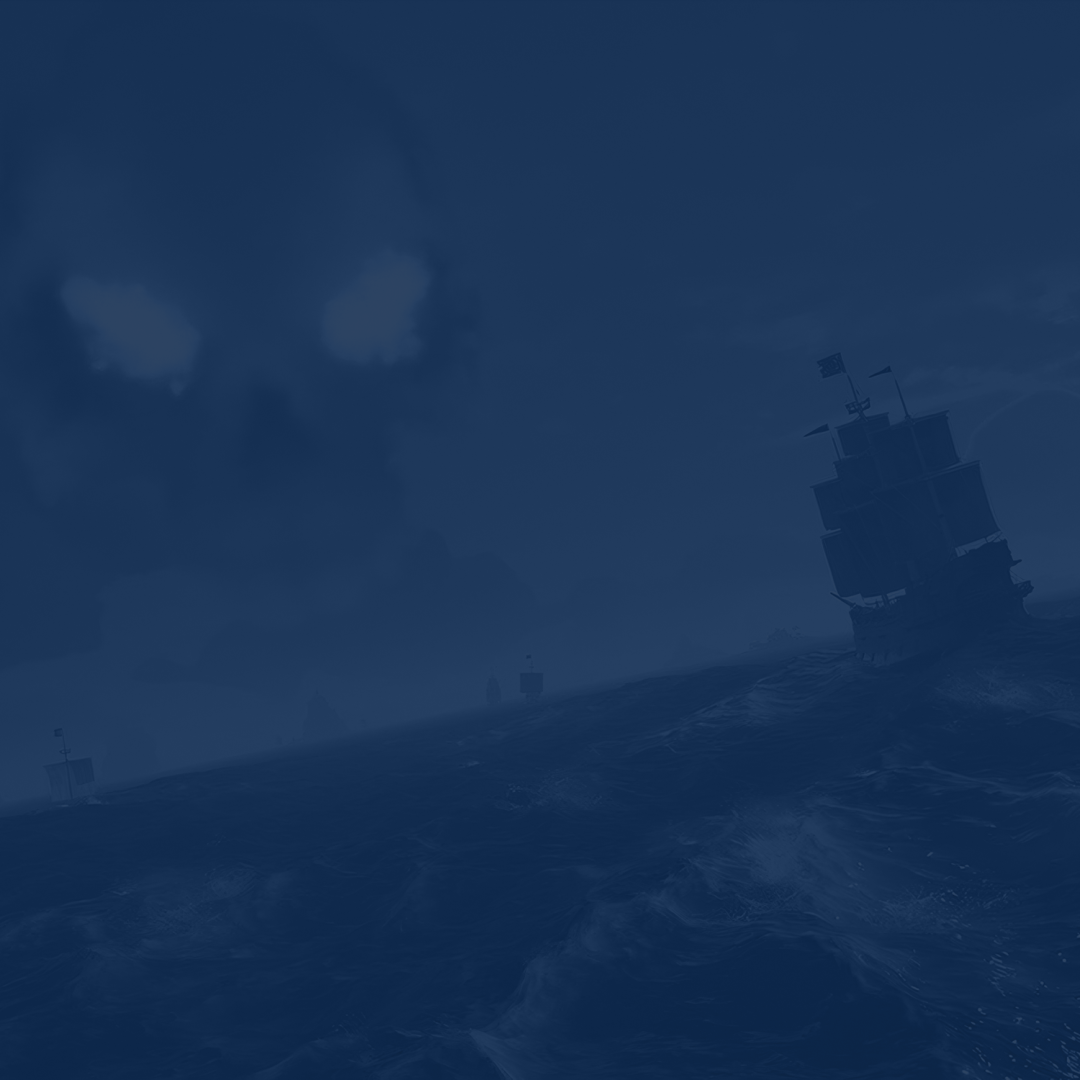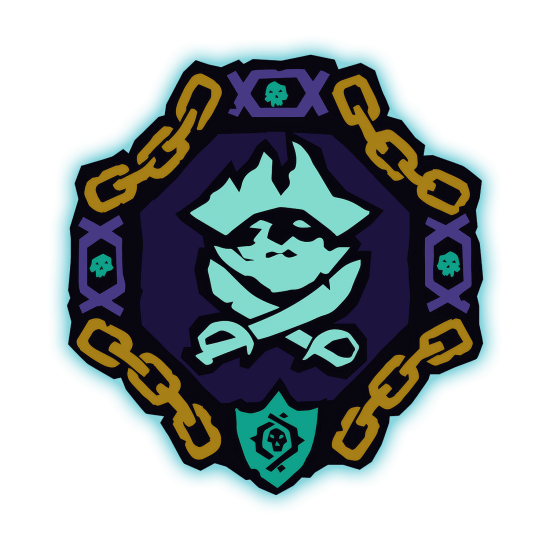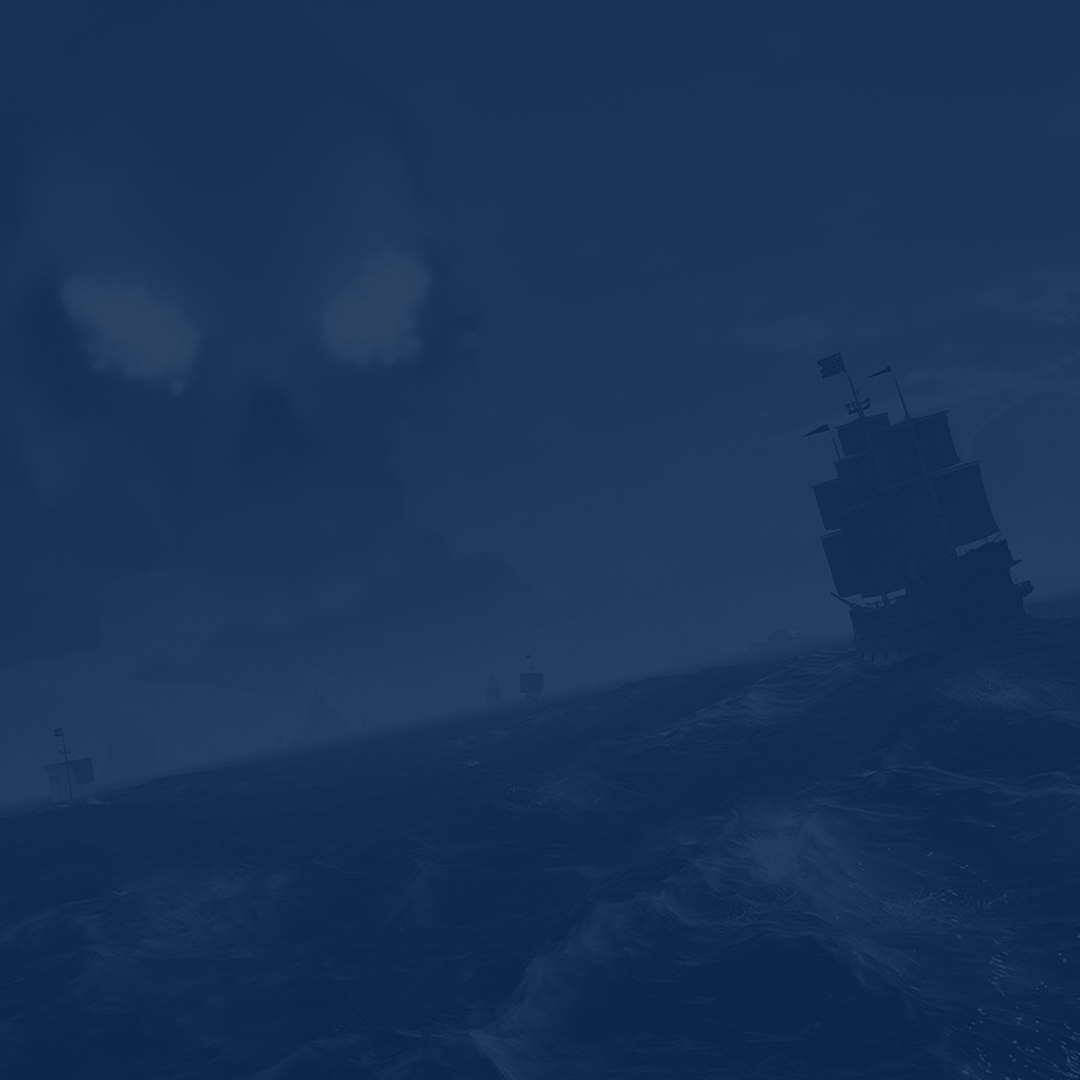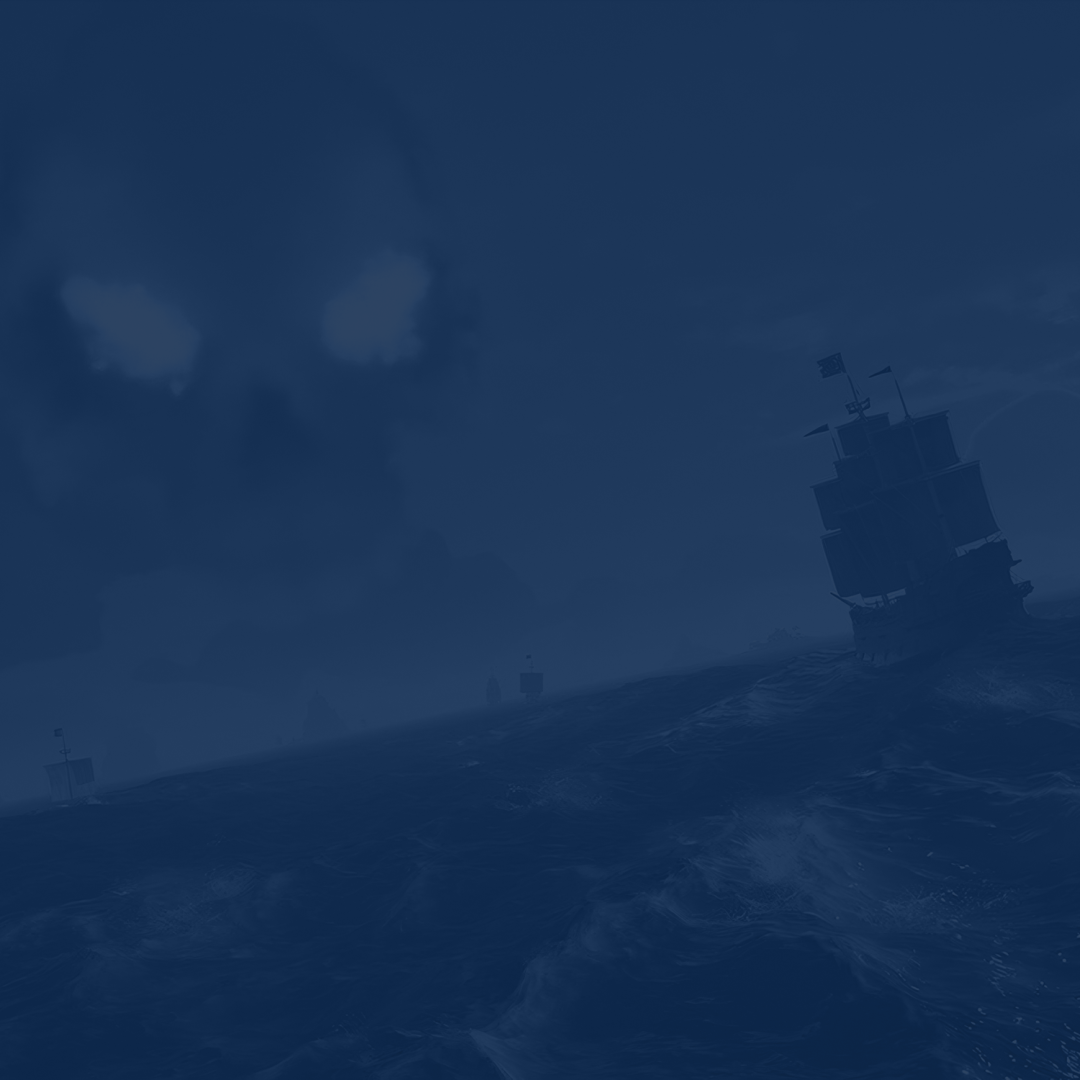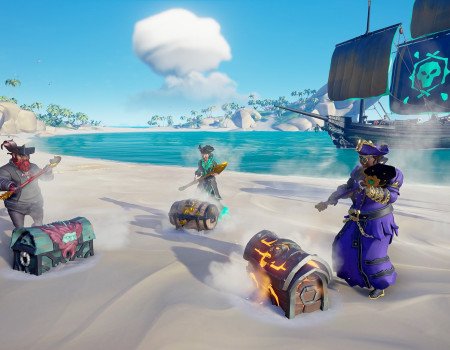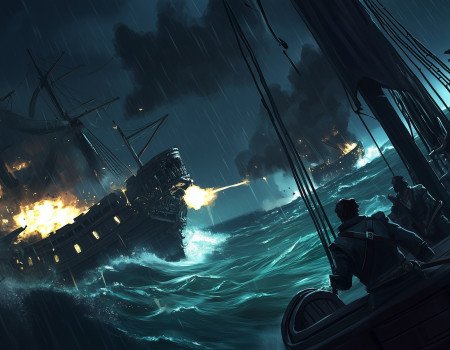Welcome to the Sea of Thieves beginner guide 2025 — your quickstart compass to becoming a confident pirate. Whether you're jumping in for the first time on Battle.net, sailing solo, or joining up with friends, this guide will walk you through the essential things every new pirate needs to know.
We’ll cover how to start playing, what ship to choose, how to make gold, survive enemy encounters, and what you should be doing in Season 15. From your first voyage to your first big score, we’ll help you avoid common mistakes and get straight to the good stuff.
Let’s set sail.
By the way, if you’ve already checked out the game and seen the customization shops—where you can buy decorations for your ship, character clothing, and other trinkets, all of which require gold—we’ve got an offer for you. Buy a Gold Farming service at SkyCoach and give yourself a solid hoard of gold so you can truly customize your pirate and your ship. It’s the best way to kick off your pirating adventures, if you ask me. SkyCoach’s services are safe, handled by professional gamers, and completed quickly. Plus, you can customize your order any way you like.
Check out more Sea of Thieves guides:
Note: At SkyCoach, you can Buy Sea of Thieves Boost at the best prices with fast delivery. Use our special PROMO CODE (in green) hidden in this article for a 20% DISCOUNT.
What is Sea of Thieves?
Sea of Thieves might fall into the familiar genre of online open-world survival games to some extent, but the reason we include this section in our Sea of Thieves beginner's guide—even though the game is seven years old—is because it does a lot of things no other game in the genre does.
This game is an open-world pirate sandbox where you and your crew sail the seas in search of treasure, adventure, and sometimes trouble. The game blends PvE and PvP, meaning you'll be dealing with both AI enemies and real players, sometimes at the same time.
Your main goal is to explore islands, complete voyages for different trading companies, collect loot, and sell it for gold and reputation. There’s no strict path to follow, no gear grind, and no levels that give power advantages. Everyone’s on a level playing field — success depends on how well you sail, fight, and think under pressure.
You can go it alone or play with others. You can chase Tall Tales to uncover the game’s lore or dive straight into ship battles. The seas are yours to roam. Just remember: nothing is safe until it’s sold, and even then, the real treasure is in the chaos along the way.
How to Start Playing Sea of Thieves
Explaining how to play Sea of Thieves might be a bit redundant since the game features a fully fleshed-out tutorial, but new players might still get confused about the differences between the two existing game modes. So, here we are.
When you launch Sea of Thieves, you’ll be dropped into a menu that asks how you want to play. There are two main options: High Seas and Safer Seas.
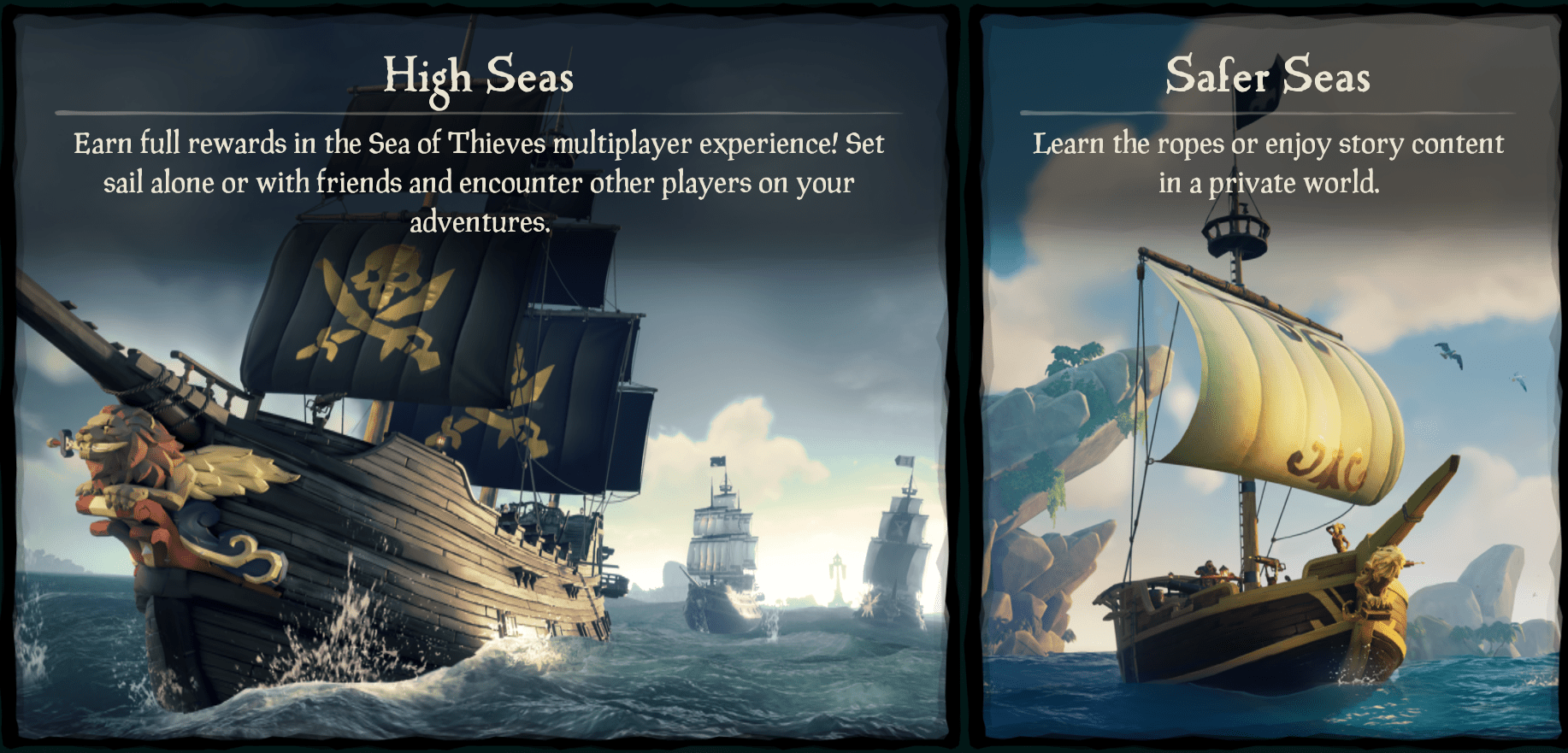
- High Seas is the full multiplayer experience — other player crews are out there sailing the same waters, which means PvP can (and will) happen. It’s also the only mode where you can unlock Pirate Legend status, raise Emissary flags for more rewards, join guilds, and progress past level 25 in trading companies. If you want the full loop of the game — this is where it happens.
- Safer Seas, on the other hand, puts you in a private server with no other players. It’s perfect if you want to chill, explore, or practice sailing without the constant threat of getting boarded. You still earn gold and progress commendations, but reputation is capped at level 25, and some systems (like Emissaries and PvP factions) are turned off. For total beginners, it's a low-stress place to get started, but just know you’ll eventually want to graduate to High Seas. BLOG20
Before loading into the world, you’ll also pick your ship. This choice depends entirely on how many people you plan to play with:
- Sloop: Designed for 1-2 players. It’s small, maneuverable, easy to learn, and ideal for soloing.
- Brigantine: Meant for 2-3 players. A good balance of speed and firepower, but more coordination is needed.
- Galleon: Built for a full crew of 4. It’s powerful but clunky, and definitely not beginner-friendly unless everyone’s on the same page.
Ships in Sea of Thieves are more than just transport — they’re your floating base. Every ship comes with essential tools: cannons, harpoons, storage barrels, a map table, a cooking stove, an ammo chest, and a customizable captain’s cabin (if you eventually buy a captained ship). It’s also your respawn point when you die. Learning how to manage and protect your ship is half the game.
💡 Did You Know?
There’s a fourth ship type in Sea of Thieves called The Burning Blade — but you won’t find it in the starting menu. This massive warship becomes accessible only during a special world event and comes packed with five cannons per side and Obsidian Skeletons that help fire cannons, repair damage, and fight off enemies. If you manage to board and control it during the event, enjoy the chaos — but don’t expect to keep it forever.
Once you’ve chosen your mode and ship, you’ll create your pirate. Instead of sliders and presets, you get a rotating lineup of randomly generated pirates to choose from. If you don’t like what you see, hit the refresh button until one feels right. All pirates function the same — hitboxes, health, and abilities don’t change — so pick one you vibe with and move on.
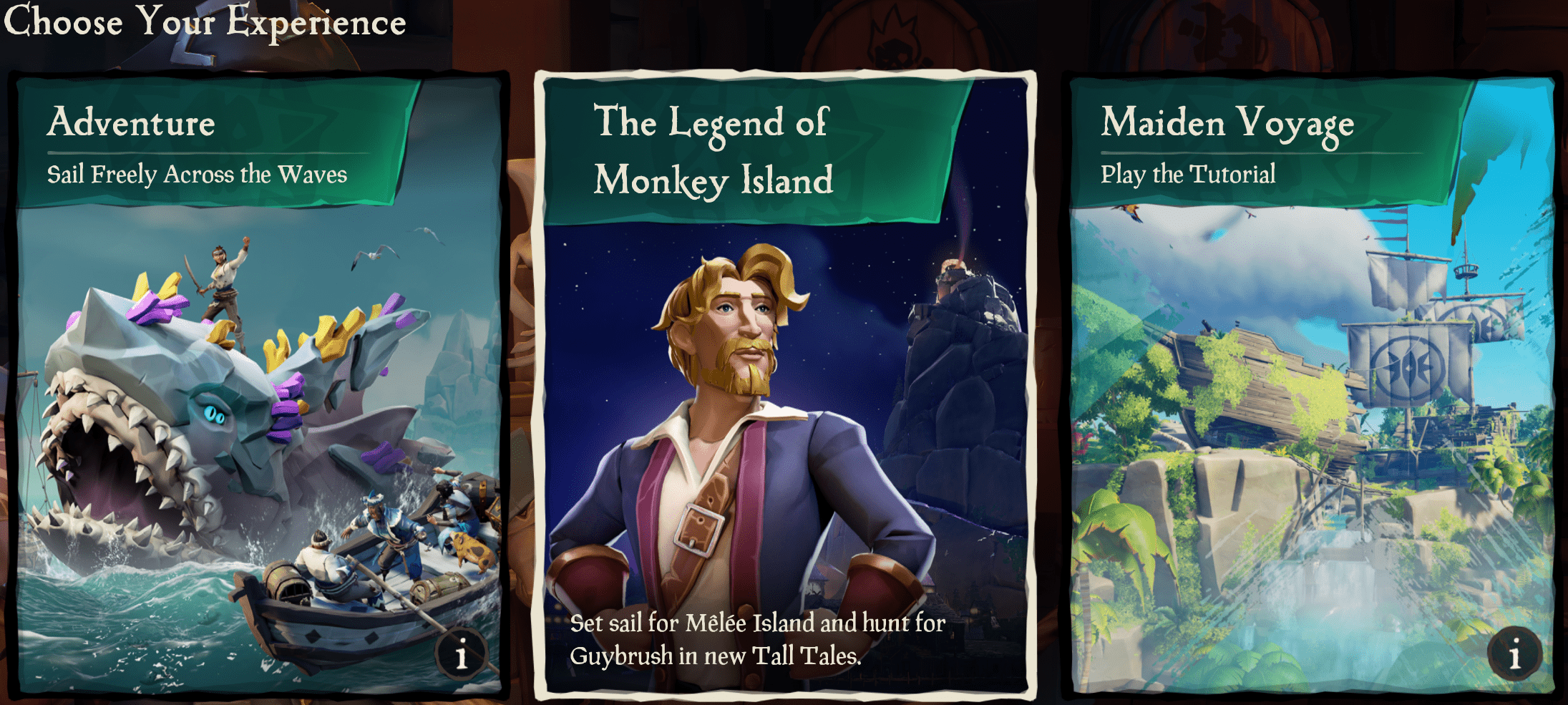
One last thing before the real action starts: do the Maiden Voyage. It’s a Sea of Thieves tutorial island that teaches you the fundamentals like using your compass, firing a cannon, cooking food, repairing your hull, and sailing your ship. It’s a private area, so no rush and no danger. You’ll also pick up some easy gold and learn the ropes from the Pirate Lord himself. It’s optional, but for most new players, it’s the smoothest possible introduction.
Once that’s done, it’s time to load into your first real session, which is what the next section of this Sea of Thieves starter guide will cover. You’ll wake up in a tavern, walk out into the world, and see your ship waiting at the dock. Now the adventure actually begins.
First Steps After Spawning
You’ve spawned in, your ship’s waiting at the dock, and now the open sea is calling. But before raising anchor and charging into a kraken’s mouth, take a few smart steps to set yourself up for success.
Step One: Raid Those Barrels
Every outpost has barrels filled with useful supplies: cannonballs, planks, food (bananas, coconuts, pomegranates, etc.), and sometimes throwables or cursed cannonballs. Grab what you can carry and stash it in your ship’s barrels. If you’ve got a storage crate, even better — it lets you loot entire barrels instantly and stock up way faster. Think of it as your pre-game meal. Without it, you're toast in a fight.
Step Two: Know Your Ship
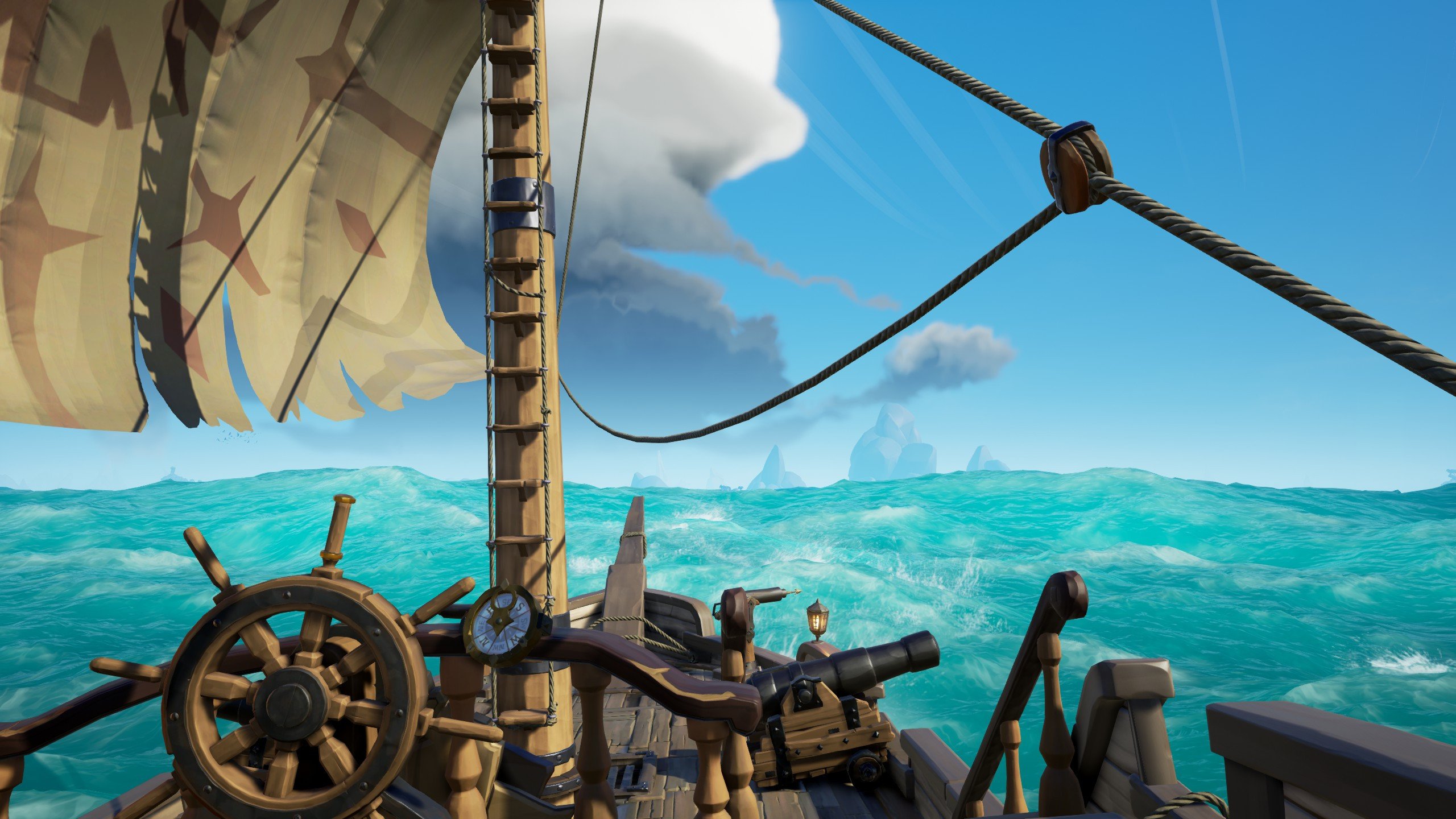
Your ship isn’t just a ride — it’s your respawn point, your treasure vault, your mobile kitchen, and your panic room when things go south.
Here’s a quick breakdown of key components:
- The wheel steers your ship. Listen for the "clunk" sound to know it's centered.
- The sails affect speed. Lower sails to move, raise them to stop. Adjust the angle to catch wind more efficiently — use the white streaks in the air as your guide.
- The anchor stops the ship, but don’t overuse it. Instead, raise sails gradually to slow down and stay maneuverable.
- The crow’s nest gives you the best vantage point to spot trouble or islands in the distance.
- The cannons do the obvious. Load them ahead of time so you’re not scrambling mid-battle.
If you're playing solo, you'll handle everything yourself, but in a crew, it helps to designate roles: helm, map-watcher, sail manager, lookout, and patch-up specialist.
Step Three: Learn to Sail (Without Crashing)
Sailing sounds simple, but it’s easy to mess up early on. Sails have two controls: one to lower/raise, and one to change the angle. When the wind’s blowing in from the side or behind, turn the sails to catch it — you’ll know you got it right when they puff up and make a flapping sound.
Here’s the trick: if you're sailing into the wind, don’t fight it. On a Sloop, point your sails forward; on other ships, turn them slightly to one side for a bit more speed. And try not to use the anchor unless you're doing a sharp anchor turn — a good sail adjustment can stop the ship smoothly, and it won’t leave you stuck raising anchor when trouble hits.
Bonus: if you’ve got harpoons (and you do), you can latch onto rocks or loot to pull the ship in tight or scoop up treasure from the water. It’s not just for show.
Step Four: Pick a Mission Type
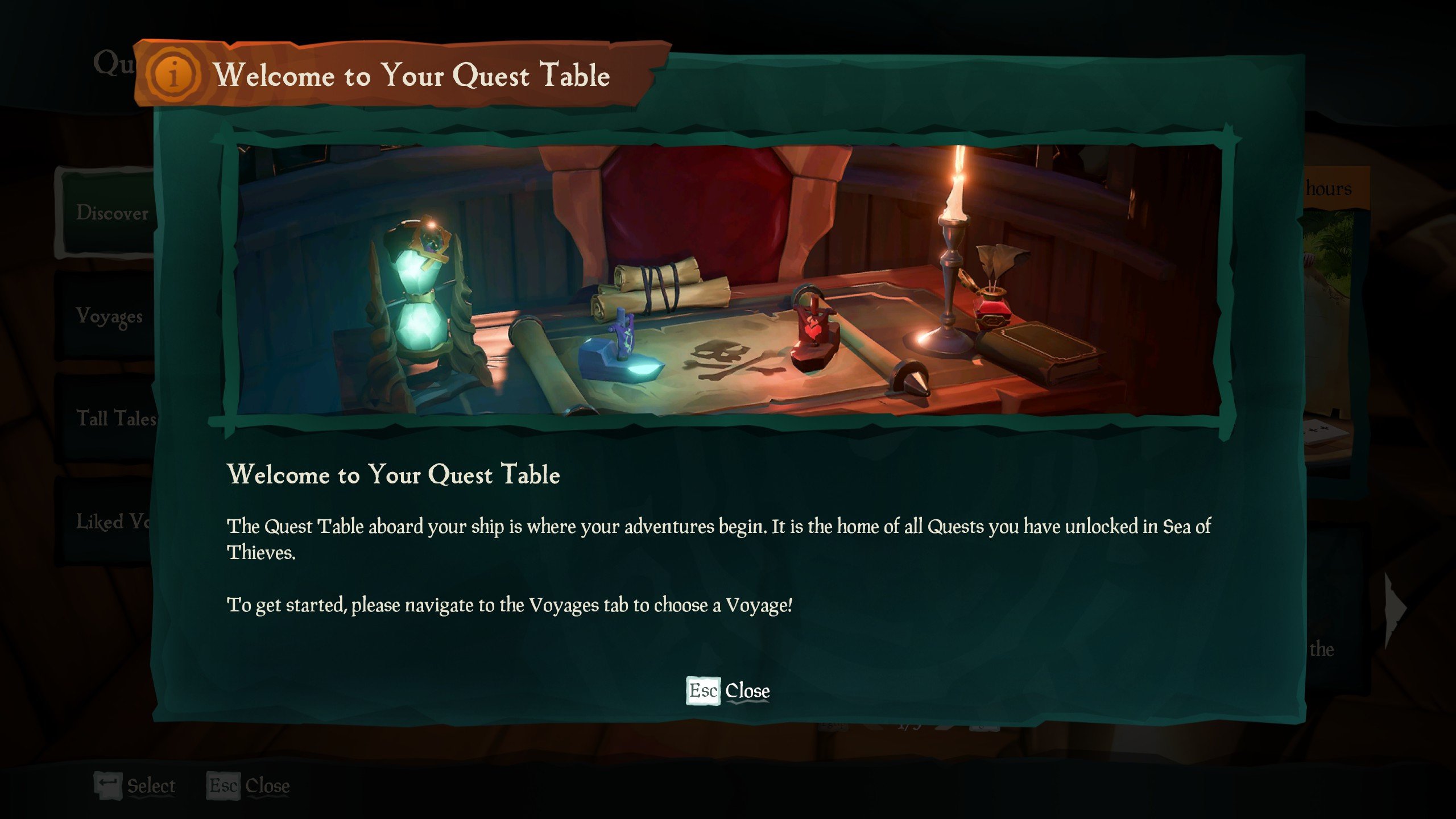
Once your ship is stocked and you’ve done a couple laps around the deck pretending to be a real pirate, it’s time to actually do something. You’ve got a few solid beginner-friendly options:
- Voyages: These are your basic questlines tied to trading companies. Dig up buried treasure, fight skeleton captains, or deliver cargo. Start by talking to vendors at the outpost and vote on a voyage at your captain’s table.
- Sea Forts: These stationary strongholds are great PvE content. Clear out ghostly enemies, grab some solid loot, and restock your barrels. They’re excellent for newer players because they’re fast, simple, and repeatable.
- Treasuries: Underwater combat zones with waves of enemies and a boss fight at the end. You’ll use tridents to deal with ocean crawlers, and you can stash your loot in a statue for safe transport back to your ship. Just watch your back when you surface — someone might be waiting.
If you're unsure where to go, check your map table for Sea Forts or Treasury locations — they're marked clearly. Voyages will guide you, but events like these are often more lucrative and more fun right out of the gate.
Making Gold and Progression

Sea of Thieves isn’t just about sailing and swashbuckling — it's about stacking gold and leveling up your reputation with the game's main factions. Here’s how the whole system works, plus how to sell your loot smarter, not harder.
Trading Companies: Who You’re Working For
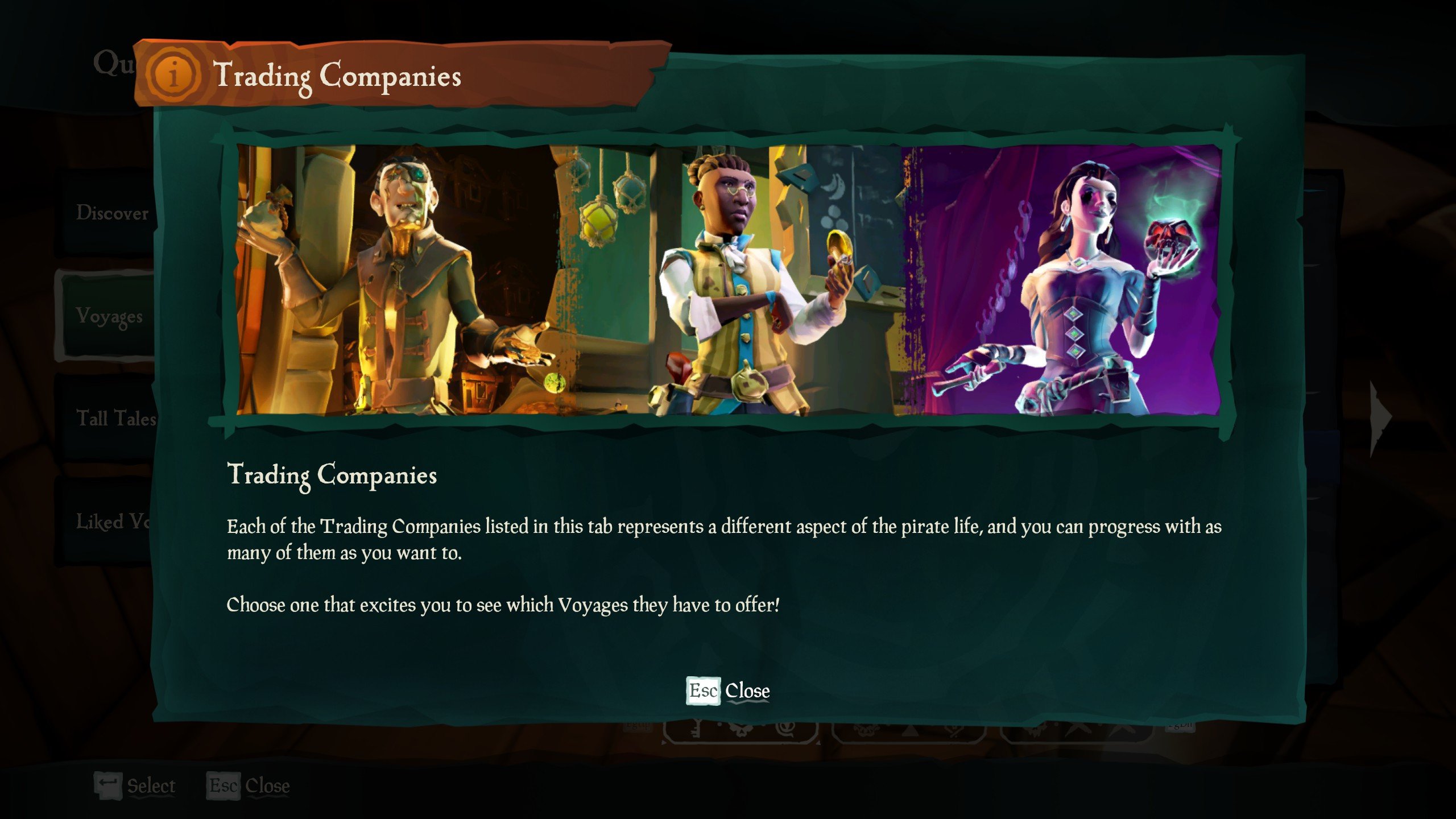
There are a few main trading companies, and each one rewards you for a different playstyle:
- Gold Hoarders: Pay you for chests and buried treasure. Expect lots of digging and X-marks-the-spot maps.
- Order of Souls: Want skulls from defeated skeleton captains or ghost ships. Combat-heavy, but simple to follow.
- Merchant Alliance: Focuses on deliveries — animals, cargo, trade crates. More logistical and time-based.
- Athena’s Fortune: Exclusive to Pirate Legends. Their quests combine bits from all the other companies for higher-value rewards.
- Reaper’s Bones: The wildcard faction. They pay for anything, including stolen loot, but encourage PvP. If you're into hunting other players, this is your crew.
Each company has a rep level. The higher your level, the better your quests and rewards. Hitting level 50 in any three of them makes you eligible for Pirate Legend — which unlocks even cooler cosmetics, quests, and flex points.
Emissary Flags: High Risk, Big Rewards
Once you reach level 15 with a trading company, you can buy an Emissary Flag for them. Raising this flag turns you into an official representative of that company, and from that moment on, everything you do that supports them earns more reputation and gold. The higher your Emissary Grade (goes up to Grade V), the bigger your payout.
At Grade V, you also unlock special Emissary Quests with stacked loot rewards. But here’s the catch: Emissary ships become targets, especially for Reapers. They can see you on the map if they're Grade V themselves, and they’re often out for blood.
So yeah, Emissaries = more profit, but you’ll also need to stay sharp and maybe learn to fight or flee fast.
🏴☠️ Pro tip: If you’re not confident with PvP yet, maybe don’t raise a flag until you’re more comfortable defending your ship — or at least know how to bail safely.
Selling Loot: Turn It In or Lose It All
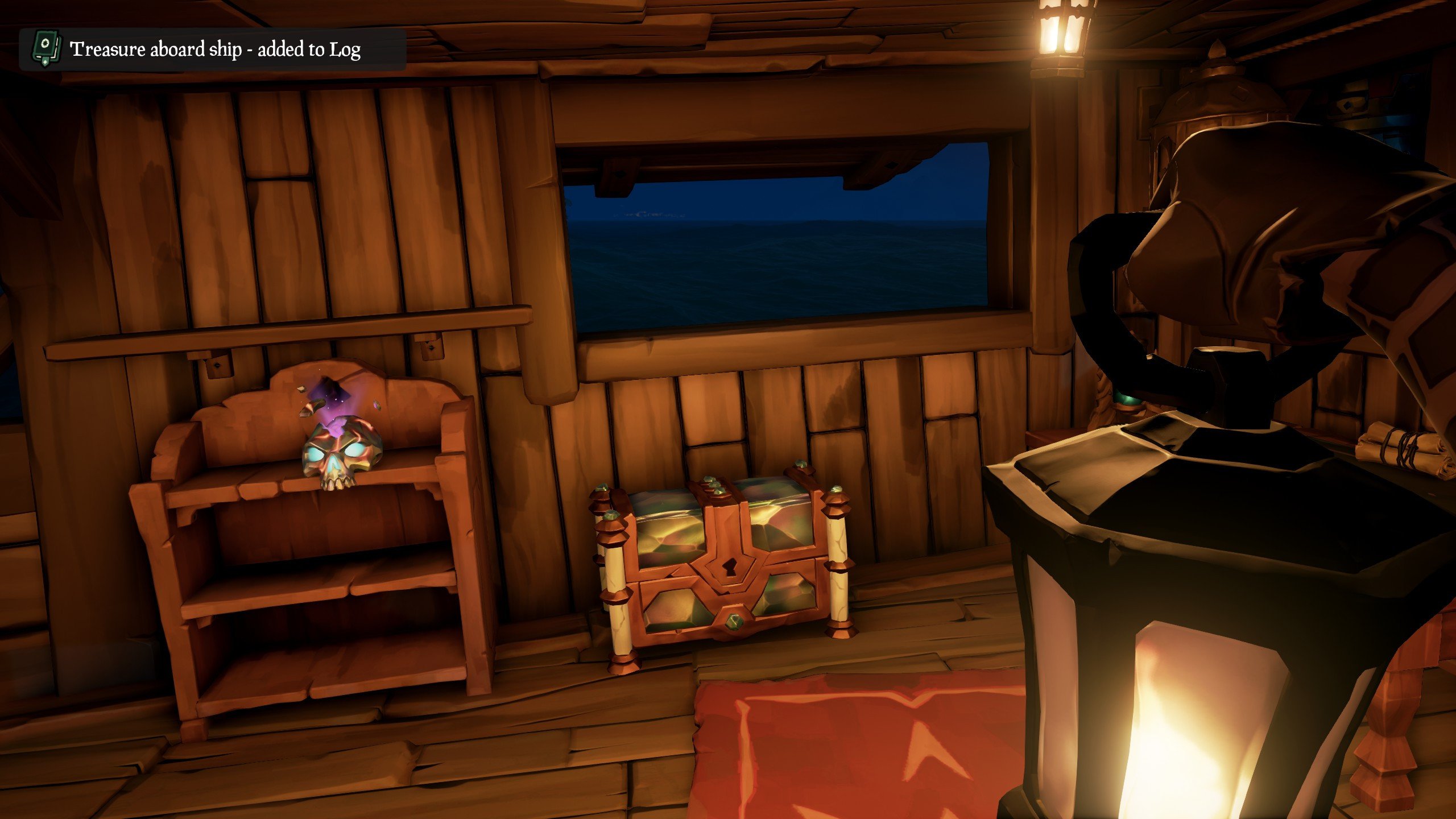
Nothing you pick up is truly yours until you sell it. Sink before selling? You lose everything on board.
Here’s how loot works:
- Gold Hoarder loot (chests, trinkets) goes to Gold Hoarders.
- Skulls go to Order of Souls.
- Crates and merchant goods go to Merchant Alliance.
- Random loot (gems, spices, relics) can usually be sold to any of them.
Normally, you’d have to run around an outpost selling stuff to different vendors, which is fine if you’ve got a few items. But once you start stacking loot, it becomes a time-wasting mess… unless you’ve got Captaincy.
Captaincy and the Sovereigns: Sell Everything, Fast

Once you buy your own ship (Captaincy costs 250,000 gold), you unlock a few major perks. The biggest? You can sell all your loot to a group called The Sovereigns, found in a tall tower at every outpost.
They don’t care which company the loot belongs to — they’ll take it all. You just need to be in a captained ship to use their services.
Even better, the Sovereign platform has a Harpoon station and an elevator. So instead of hauling crates up a dock by hand, you Harpoon it all in, drop it off, and boom — sold in minutes.
If you want to make selling faster, smoother, and more profitable, Captaincy + Sovereigns is a game-changer. It doesn’t just save time — it lowers your risk. Less time offloading = less time for someone to gank your haul.
Surviving and Thriving on the Seas
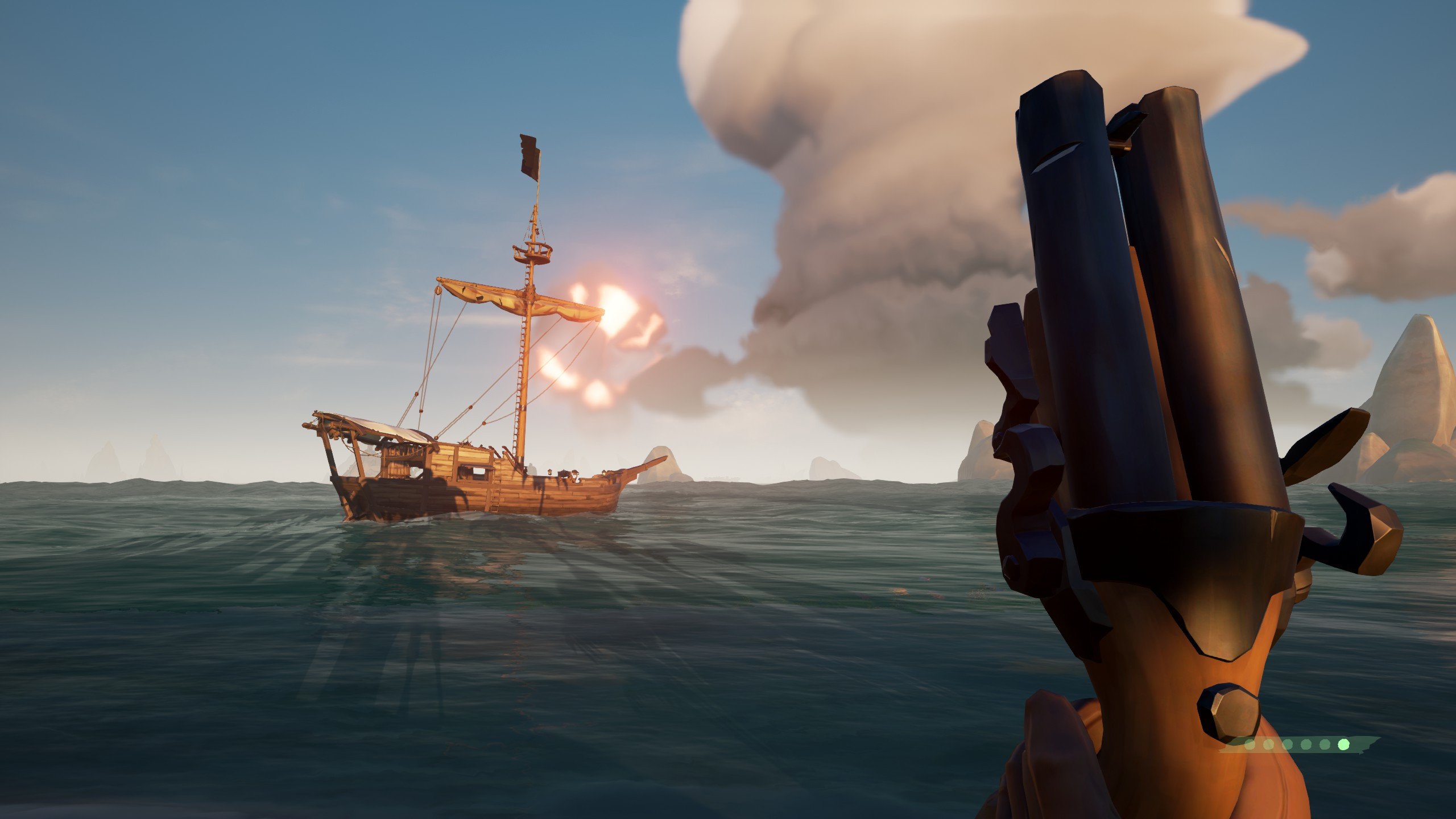
Here’s where the real Sea of Thieves new player guide begins. Navigating the open waters is one thing — surviving them is another. Between aggressive players, sea monsters, and world events that can spiral into chaos fast, your journey won’t be smooth sailing for long. This section will get you ready for the rougher side of Sea of Thieves and help you stay afloat when it matters most.
How to Handle PvP Encounters
Even if you’re not looking for a fight, someone else probably is. PvP (player vs. player) is always a threat on the High Seas. If you’re spotted, especially with a visible Emissary flag, other players may decide you’re worth chasing.
Here’s how to stay alive:
- Watch the horizon: Constantly scan for other ships. The Crow’s Nest gives the best view, but even glancing from the deck can warn you early. BLOG20
- Don’t overcommit to loot: The more treasure you have, the more likely you are to be targeted. Sell frequently.
- Use speed to your advantage: Sloops are the best for solo players or duos because they’re nimble and can sail directly into the wind to outrun larger ships.
- Anchor only when necessary: Anchoring makes you a sitting duck. Learn to slow down by raising sails instead.
- Avoid tunnel vision: Don’t get so caught up in steering or looting that you miss a boarding enemy — one person can sink your ship if you're not paying attention.
If you are boarded or under attack, don't panic. Focus on patching the lower deck, bailing water, and returning fire if you’re able. If you're clearly outmatched, it’s okay to cut your losses and sail away — or scuttle and start fresh.
Best Beginner Weapons and Loadouts
You can carry two weapons at a time, and your loadout can really shape how you handle both PvE and PvP. Here’s a solid starting point:
- Sword + Blunderbuss: Great for defending your ship and close-range fights. The blunderbuss can knock enemies off ladders or decks with one blast.
- Sword + Pistol: Balanced option with reach and mobility. The sword’s charged lunge is handy for mobility and quick damage, and the pistol is consistent at mid-range.
- Pistol + Eye of Reach: For confident aimers who want flexibility across all ranges — just remember the sniper won’t help in close quarters.
Avoid trying to double-gun (blunderbuss + eye of reach) too early — it’s powerful but depends heavily on fast reflexes and good aim. Also note: melee combat has its quirks, so don’t button-mash with the sword. Learn to combo and block rhythmically.
World Events, Random Threats, and Sea Monsters
Not every danger comes with a pirate flag. The world of Sea of Thieves loves to throw chaos your way at the worst times.
- World Events like Skeleton Forts, Ghost Fleets, or the Fort of Fortune spawn visibly in the sky — with skull clouds, tornadoes, or other unique symbols. These can be lucrative but are often hot zones for PvP.
- Sea Monsters include the Kraken and Megalodon. You’ll know they’ve shown up when the water darkens or ominous music kicks in. You can flee, but if you’ve got a stocked ship and solid aim, you can take them down for loot.
- Storms are more than just visual flair — they damage your ship, spin your compass wildly, and cause leaks. Avoid them unless you’re looking for a challenge.
It’s also worth learning to recognize signs of risk: a Reaper’s Mark on another ship’s flag means they’re likely aggressive. If you see a mermaid in the water and you’re not far from your own ship, someone might be hiding nearby.
Common Mistakes New Players Make (And How to Avoid Them)
Most players learn by doing — or by getting sunk. But here are a few missteps that can be avoided entirely:
- Anchoring too often: You don’t need to drop an anchor to stop. Just raise the sails early.
Not stocking up: Empty barrels = short voyages. Always fill up on food, planks, and cannonballs before leaving an island. - Carrying too much loot for too long: If your ship’s full of treasure, you’re a floating target. Cash out often.
- Using cursed chests without understanding them: Chests like the Chest of Sorrow or Rage can flood or set your ship on fire. Store them carefully or sell them quickly.
- Ignoring the map: The ship’s map is your lifeline. Zoom in, mark your route, and know where nearby Outposts or Sea Forts are.
Finally, don’t be afraid to scuttle. If your ship is surrounded and you’ve got nothing left to lose, starting fresh might be faster than dragging things out. It’s all part of the pirate’s life.
Sea of Thieves Tips and Tricks
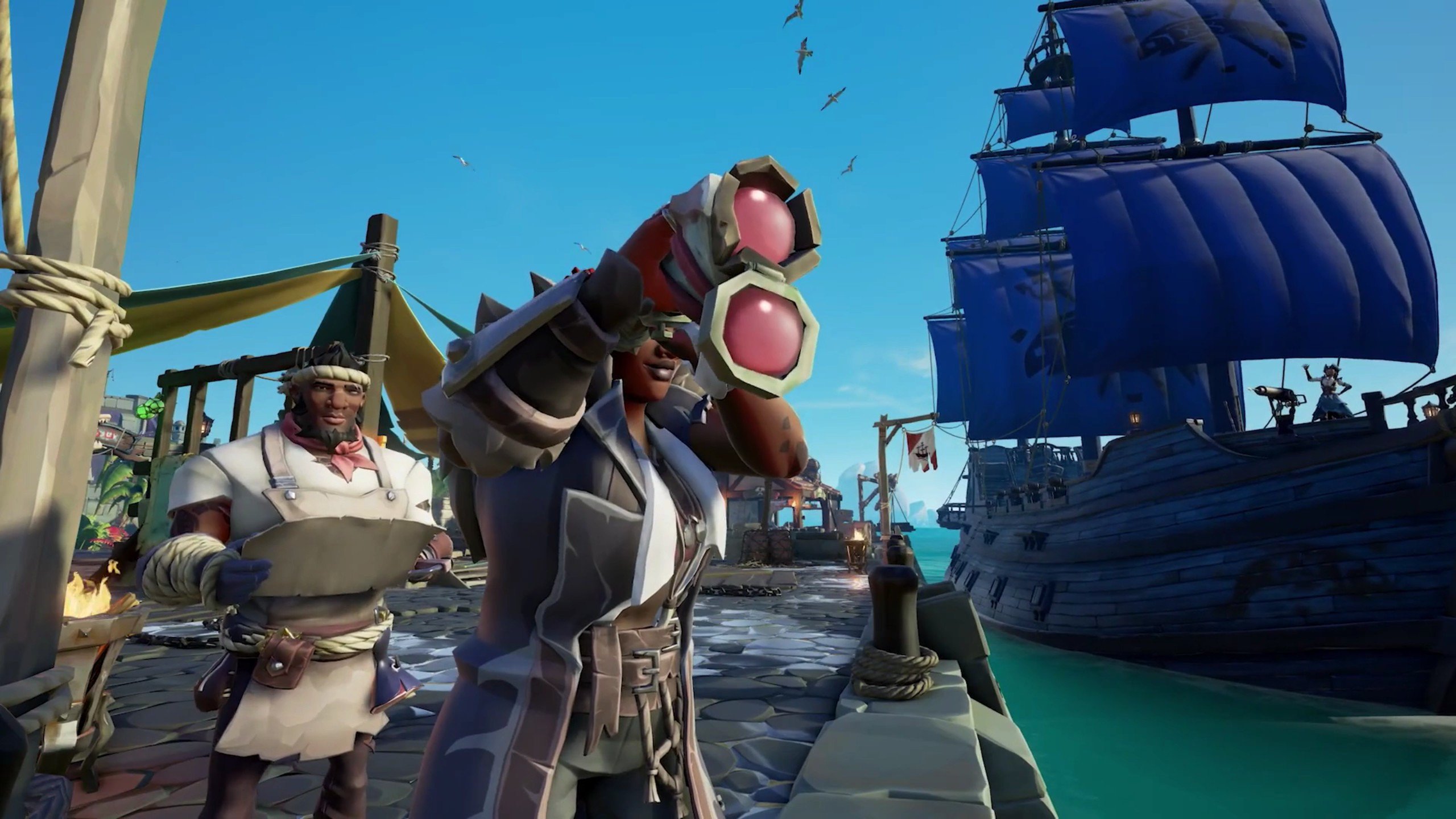
Once you’ve got a few voyages under your belt, you'll start to realize this game is less about raw mechanics and more about what you notice. Some of the most important lessons aren’t spelled out for you — they’re picked up from close calls, sudden ambushes, or clever escapes. To save you some pain, here’s a collection of Sea of Thieves tips and tricks that’ll give you a real edge, right from the start.
Top 5 Most Useful Tips
There are plenty of tips that sound smart but don’t actually come up all that often. The ones here? You’ll use them constantly — whether you're managing your ship, fighting off boarders, or just trying not to look like a glowing loot piñata.
1. Never Anchor Unless You Absolutely Have To
Anchor turns are useful, but most of the time you're better off using sail control to stop or slow down. If someone shows up while your anchor's down, you’ll be stuck — and probably sunk — before you can raise it again.
2. Always Keep Your Supplies Topped Off
Hit every barrel at Outposts and islands. Stockpile wood, cannonballs, food, and upgrade to pineapples and mangoes when you can. Empty ships die fast. Full ships live to fight or run.
3. Learn to Read the Wind
Speed matters. Turn your sails to catch the wind — you’ll know you’ve got it when the sails puff out and stop flapping. The faster you move, the more control you have over fights, escapes, or just staying out of trouble.
4. Hide Your Loot (and Don’t Stack It)
One pile of treasure on the main deck is an invitation. Tuck loot in corners, the crow’s nest, or under stairs. Spread it out. More importantly, sell often. Gold in your pocket is better than gold in the water after you sink.
5. Watch the Horizon Constantly
Get in the habit of checking 360 degrees — ideally from the crow’s nest. Ships that are angled toward you and catching wind are worth watching closely. Early detection means early decisions, and that usually keeps your loot safe.
Honorable Mentions
The Sea of Thieves tips above will serve you in almost every session, but there are a few extra tricks that are too good to skip. These are the moves that’ll make you seem like you’ve been sailing for months — even if you’ve only just figured out where the planks are.
Stealth and Situational Awareness
Staying undetected is half the game sometimes — especially when sailing solo or with big hauls.
- Mermaids give away stealth players. If you see one and your crew is nearby, someone else triggered it. Be on high alert.
- Turn off your ship’s lanterns at night. You’re way harder to spot from a distance when you’re not lit up like a floating tavern.
- Use the Hide emote to stow away on enemy ships. It hides your nameplate and can buy you time to pull off a surprise move.
Combat and Survival Edge
- Fights in Sea of Thieves aren’t about twitch reflexes — they’re about disruption and timing.
- Blunderbombs are absurdly useful. Use them to knock enemies off ladders, delay repairs, or break up boarding attempts.
- Always repair lower deck holes first. Water rises fast from bottom-tier holes. Fix those or you’ll sink in seconds.
- Don't bucket water into your ship. It sounds dumb, but it's easy to mis-aim in a rush. Always throw overboard.
Efficiency and Movement
- Being efficient means more loot turned in and less risk.
- Harpoon everything. Treasure, barrels, floating crates — drag it all in from the deck. It’s faster and safer.
- Attach a Harpoon Rowboat to reverse. Yes, this is a real thing. It’s a niche but hilarious way to back out of bad angles.
- Use Collector’s Chests. Stack small loot inside to cut down on trips when unloading treasure.
Knowing these Sea of Thieves tips for new players won’t make you invincible, but they’ll make you harder to catch, faster at cashing in, and much more likely to survive the chaos that makes Sea of Thieves what it is.
Seasonal Content – What’s New in Season 15

Season 16 opens with fresh chaos and cryptic mysteries. Here’s a quick overview of what’s arrived so far:
Cannon of Rage
A deployable cannon that can be placed on your ship or on land. It’s powerful and flexible, offering new angles of attack. The catch? It overheats easily and explodes with the force of a mega keg if damaged or overused. It’s a tactical weapon with serious risk attached, so placement matters.
Order of Bone and Blade
A new faction of Flameheart-summoned skeletons now appear across the seas. Unlike other skeleton enemies, these are helpful NPCs. They assist in uncovering ancient secrets buried at skeleton camps and burial sites introduced in earlier seasons. You’ll recognize them by the skeletal fingers sticking out of the sand.
Reaper Quests with a PvP Twist
The Reapers have new quests that draw players into PvP scenarios. These missions revolve around looting and outmaneuvering other crews, blurring the line between hunter and hunted. It’s not always clear who’s doing the raiding, which is part of the fun.
Twitch Drops – Starting May 23
Watch partnered Twitch streams to earn in-game rewards. This drop includes:
- A bag of gold
- One Renown level
- Herie Gertie Showoff emote
- Flameheart Voyage
- Gilded Phoenix ship cosmetics
- The Perb Cidian hat
- Spring Blossom pistol BLOG20
Make sure your Twitch and Sea of Thieves accounts are linked to claim the items.
Like previous seasons, content will be staggered. More quests, cosmetics, and gameplay changes are expected over time. For now, the focus is on the new cannon, the search for ancient secrets, and the evolving Reaper storylines.
Conclusion
Starting out in Sea of Thieves can feel overwhelming, but like most good adventures, it’s all about taking that first step. This guide has covered the fundamentals—game modes, sailing, PvP, progression systems, and even seasonal content—so you can skip the confusion and dive right into the fun. The seas may be unpredictable, but now you’re better prepared to navigate them.
Remember: you will sink, lose loot, and mess up. That’s normal. Learn from each session, don’t panic, and most of all—have fun. The best pirates aren’t the flashiest; they’re the ones who adapt, think ahead, and know when to fight and when to sail away.
F.A.Q.
Can you play Sea of Thieves solo?
Yes. Soloing on a sloop is totally viable and a great way to learn the ropes. Expect a steeper learning curve, especially with PvP and multitasking, but it’s a solid way to improve quickly.
How to be good in Sea of Thieves?
Getting good takes time, but there are a few habits that speed up the process. Start with these:
- Learn how to sail efficiently without anchoring
- Keep your ship stocked and organized
- Always watch the horizon for threats
- Pick your battles—don’t fight just to fight
- Sell loot often to reduce risk
Is Sea of Thieves easy?
The basics are easy to pick up, but mastering the game takes time. PvP, sailing under pressure, and understanding game mechanics make it a learning-heavy experience.
Is Sea of Thieves combat easy?
Not exactly. Combat is simple in mechanics but complex in application. Swordplay, gun accuracy, and positioning all matter, and PvP players tend to be very skilled.
What is the best beginner weapon in Sea of Thieves?
Sword + flintlock or sword + blunderbuss. These combos give you melee coverage and either reliable mid-range damage or strong close-range burst.
What to do when you first start in Sea of Thieves?
The early game is about learning and building a foundation. Here’s a good starting path:
- Complete the Maiden Voyage tutorial
- Explore Safer Seas to practice
- Try Sea Forts or Treasuries for gold
- Gather supplies at outposts
- Save up for a Captain ship
What is the best beginner ship in Sea of Thieves?
The Sloop is ideal for beginners. It's easy to control, fast, and manageable with one or two players. It also lets you learn every role on the ship without being overwhelmed.



